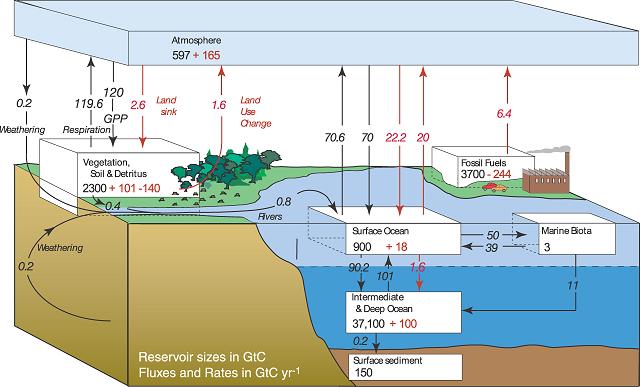ESSCOSMOS/2009
Welcome
This is the home page for the Summer 2009 COSMOS course in Global Change Biology taught by Dr. David LeBauer. This course complements the Global Change Chemistry course taught by Dr. Stan Tyler. We seek to teach you how humans impact the chemistry and biology of Earth.
Pictures
Our cluster has a "photo bucket"
News
07/16/09 Intel proposals are due this coming Tuesday by midnight. Please create your proposal in google docs and share them with Mrs. Arendondo, Dr. Tyler, Dr. LeBauer, Mrs. Grote, or Mrs. Williams. Your proposal should include an INTRODUCTION, METHODS, and BUDGET. Remember the Intel award is worth $500 that can be used towards a science fair project at your school or other science competition.
07/03/09 Congratulations to Chris Probert, Adarsha Shivakumar, and Aditi Gupta for leading the Global Change Chemistry and Biology Cluster to victory in the Academic Bowl!
Course Discription

Prerequisites
Geometry, one year of high school chemistry, biology and Algebra II
Overview
COSMOS academic program overview
Make sure to read the tips for success at COSMOS.
In the last few decades, Global Change Science has emerged as a new paradigm for the expanding field of Environmental Science. Environmental science traditionally has focused on pollution and degradation of the environment related to human activities. In global change science, we study changes in the global environment, including alterations in climate, land productivity, oceans and other water resources, atmospheric chemistry, and ecological systems that may alter the capacity of the Earth to sustain life. As an interdisciplinary field, Global Change Science relies on an Earth system science approach, i.e. the Earth is studied as a whole and is viewed as a system of many separate but interacting parts.
In our Global Change Chemistry course, we will focus on atmospheric chemistry and biogeochemistry. Students will learn about some of the exciting frontiers in chemistry as they apply to earth system science through lectures, laboratory experiments, and web-based modules and other instructional computer software. The nearby San Joaquin Marsh will serve as a field site for investigating trace gas fluxes and biogeochemistry. Some of the topics to be covered include the Earth-Sun energy balance, acid rain and urban air pollution, atmospheric composition and biospheric-atmospheric interactions, the greenhouse effect and global warming, and ozone depletion.
In Global Change Biology, students will learn how to evaluate the ways in which humans impact organisms and the cycling and transformation of chemicals by the biosphere. As humans warm, toxify, and re-landscape the world, the biological systems that maintain habitable conditions are threatened. Many of these impacts interact with one another, and it can be difficult to predict how this will affect the basic functioning of the earth system. Lectures, laboratory sessions, and field experiments will encompass specific impacts to the biosphere such as farming and urbanization, teach field and laboratory techniques commonly used in ecosystem science and environmental monitoring, and explore differences between managed and natural ecosystems present on the UCI campus.

